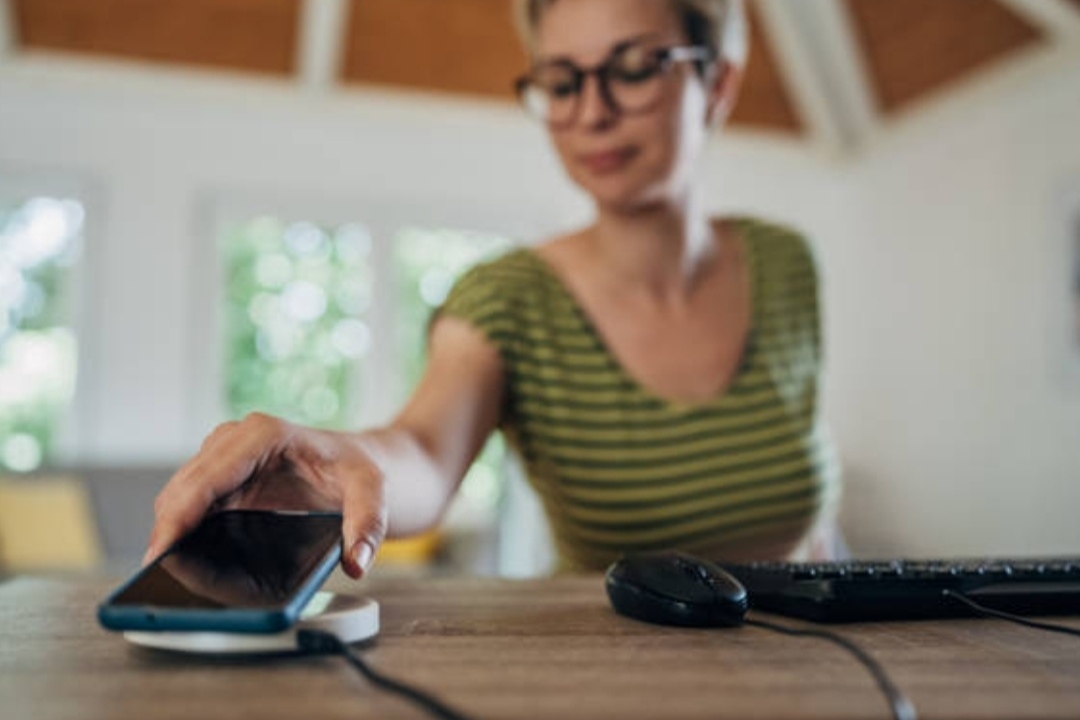Introduction to Wireless Charging

Brief Overview of Wireless Charging Technology
Wireless charging is a revolutionary technology that allows devices to power up without the need for traditional wired connections.
Instead of plugging a charging cable into your phone or smartwatch, wireless chargers use electromagnetic fields to transfer energy from a charging pad to your device.
This method, known as inductive charging, has rapidly grown in popularity due to its convenience, durability, and reduction in cable clutter.
With the rise of wireless technology, more smartphones, smartwatches, earbuds, and even laptops are being designed to support cord-free charging.
If you’re wondering how to use wireless chargers safely and efficiently, it’s essential to understand how this technology works, its benefits, and best practices to maximize performance.
How Does Wireless Charging Work?
Wireless charging is based on a scientific principle called electromagnetic induction.
Here’s how it works:
- The wireless charging pad (or stand) contains a coil that generates an electromagnetic field when connected to a power source.
- Your smartphone or device also has a receiver coil that picks up this energy and converts it into electrical current.
- This current is then used to charge the battery of your device wirelessly.
The most common wireless charging standard is called Qi (pronounced “chee”), developed by the Wireless Power Consortium (WPC).
- The Qi standard ensures compatibility between different devices and chargers.
- Most modern smartphones, including iPhones (iPhone 8 and newer) and Android devices (Samsung Galaxy S series, Google Pixel, etc.), support Qi charging.
The Benefits of Wireless Charging
Wireless charging provides numerous advantages over traditional wired charging:
✅ Convenience – No need to fumble with cables; simply place your device on the pad and start charging.
✅ Durability – Reduces wear and tear on charging ports, preventing common issues like broken cables or damaged charging ports.
✅ Less Clutter – Eliminates the mess of tangled wires, making your workspace cleaner and more organized.
✅ Safer Charging – Reduces the risk of electrical shorts and connector damage.
✅ Future-Ready Technology – As more public places, cafes, airports, and vehicles integrate wireless charging stations, having a compatible device ensures seamless charging anywhere.
Are There Any Downsides?
While wireless charging offers several benefits, there are some drawbacks to consider:
❌ Slower Charging Speeds – Standard wireless chargers (5W-10W) can be slower than fast wired chargers (20W-100W).
❌ Heat Generation – Wireless charging produces more heat compared to wired charging, which can impact battery life if not managed properly.
❌ Alignment Issues – If the phone is not placed correctly on the pad, charging may be slower or fail altogether.
Evolution and Growing Popularity of Wireless Charging in Modern Devices
Wireless charging technology has been in development for over a century.
It was first introduced by Nikola Tesla in the 1890s, when he demonstrated the ability to transmit electricity wirelessly using electromagnetic fields.
However, it wasn’t until the 21st century that this concept became commercially viable, thanks to Qi wireless charging technology.
A Timeline of Wireless Charging Development:
📌 2009 – The Wireless Power Consortium (WPC) introduced the Qi wireless charging standard, setting the stage for mass adoption.
📌 2012 – The Nokia Lumia 920 became one of the first mainstream smartphones to feature built-in wireless charging.
📌 2017 – Apple adopted Qi charging in the iPhone 8, iPhone X, and later models, making wireless charging a standard feature for all new iPhones.
📌 2020s – Advancements in fast wireless charging (up to 50W) and reverse wireless charging (allowing phones to charge other devices) became widely available.
📌 2023-Present – The next-generation Qi2 wireless charging standard was introduced, improving efficiency, speed, and device alignment for faster charging.
Why is Wireless Charging Becoming More Popular?
The adoption of wireless charging has skyrocketed in recent years due to:
- Increasing smartphone adoption – With leading brands like Apple, Samsung, Google, and OnePlus integrating wireless charging, the demand has grown exponentially.
- Public charging stations – Airports, hotels, cafes, and even cars now offer built-in wireless charging stations, making it easier to charge on the go.
- Health and safety benefits – Reducing wear on charging ports minimizes the risk of water damage, dust buildup, and broken connectors.
- Fast Wireless Charging Improvements – New technologies like MagSafe (Apple) and Qi2 have significantly enhanced charging speeds and efficiency.
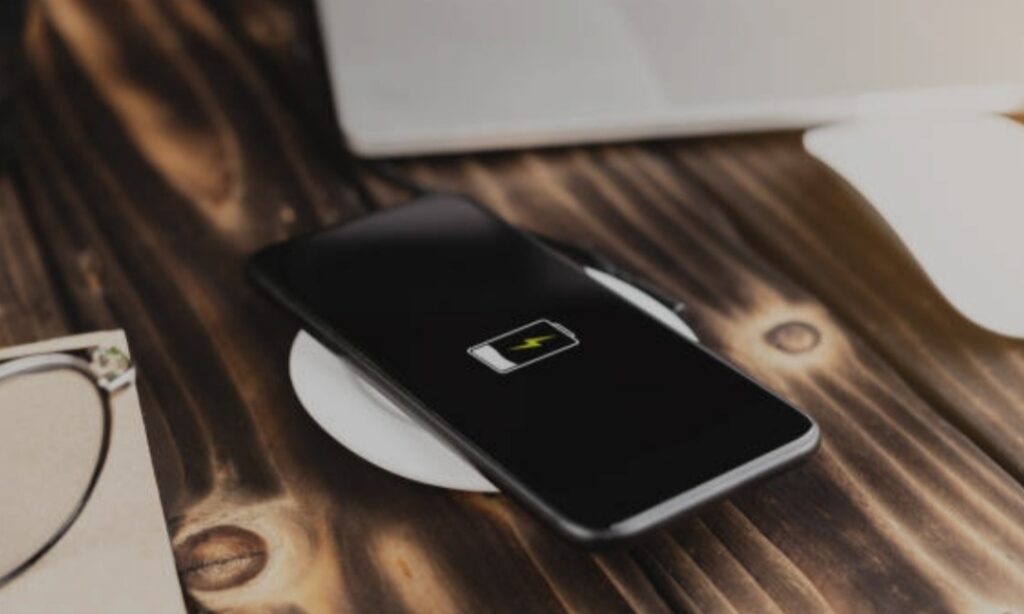
What’s Next for Wireless Charging?
The future of wireless charging looks even more promising, with companies working on long-range wireless charging that doesn’t require direct contact with a pad.
Some potential advancements include:
✅ Over-the-Air Charging – Companies like Ossia and Xiaomi are developing technology that can wirelessly charge devices within a few meters of the charging station.
✅ Faster Wireless Charging Speeds – Future chargers may reach 100W+ wireless speeds, competing with the fastest wired chargers.
✅ Standardization & Wider Adoption – The new Qi2 standard aims to improve charging efficiency, reduce heat generation, and ensure universal compatibility across all devices.
Wireless charging has evolved from a concept into a mainstream technology used by millions worldwide.
Understanding how to use wireless chargers properly can help extend battery life, optimize charging speeds, and prevent overheating issues.
As wireless charging continues to improve, adopting best practices ensures you get the most efficient and safest charging experience possible.
💡 Pro Tip: If you’re looking for a reliable and efficient wireless charger, check out top-rated Qi-certified wireless chargers here to enhance your charging experience!
Understanding Wireless Charging Technology
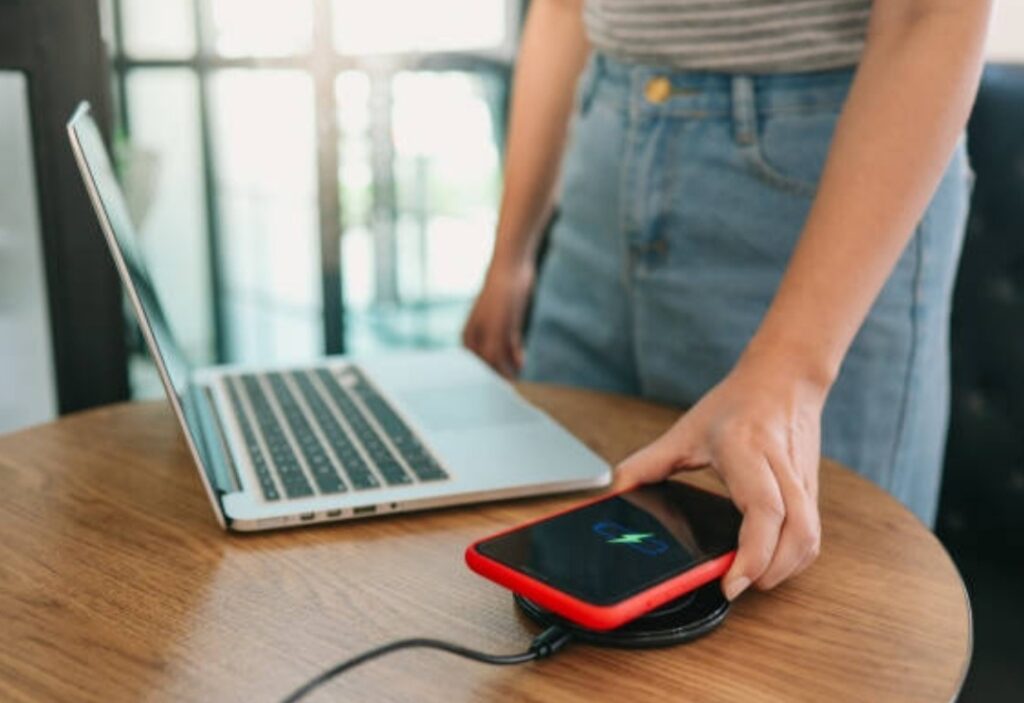
How Wireless Charging Works
Wireless charging is a groundbreaking technology that enables cord-free power transfer between a charging pad and a compatible device.
Instead of relying on traditional wired connections, wireless charging operates through electromagnetic fields to transmit energy from the charger to the device.
This seamless power transfer eliminates the need for physical cables, making charging more convenient, durable, and clutter-free.
But how exactly does wireless charging work?
The core principles behind this technology are electromagnetic induction and resonant inductive coupling.
Electromagnetic Induction: The Science Behind Wireless Charging
At the heart of wireless charging lies electromagnetic induction, a process discovered by Michael Faraday in 1831.
Electromagnetic induction works by generating an electric current in one coil (transmitter) that induces a current in another coil (receiver) without direct contact.
Here’s how it applies to wireless charging:
1️⃣ The charging pad (transmitter) contains a copper coil that produces an electromagnetic field when connected to a power source.
2️⃣ The smartphone or device (receiver) also has a built-in coil that picks up the energy from the electromagnetic field.
3️⃣ The receiver coil converts this energy into electrical current, which charges the device’s battery.
This method ensures that energy is transferred safely and efficiently without requiring physical contact between the charger and the device.
Resonant Inductive Coupling: A More Advanced Wireless Charging Method
While standard inductive charging requires close contact between the device and the charging pad, some advanced wireless chargers use resonant inductive coupling to extend the charging range.
This technique allows devices to charge even if they are not perfectly aligned with the charging pad, reducing placement issues that often occur with traditional wireless chargers.
Key benefits of resonant inductive coupling include:
✅ Extended Charging Range – Devices don’t have to be placed perfectly on the pad.
✅ More Efficient Power Transfer – Reduces energy loss, leading to faster charging speeds.
✅ Multiple Device Charging – Some chargers can power multiple devices simultaneously.
With these advancements, wireless charging is becoming more efficient and widely adopted, making it an essential feature in modern smartphones, smartwatches, earbuds, and even electric vehicles (EVs).
Components Involved in Wireless Charging
Wireless charging involves two primary components:
1️⃣ Charging Pad (Transmitter Coil)
2️⃣ Device Receiver Coil
Each plays a crucial role in enabling safe and efficient power transfer.
1. Charging Pad (Transmitter Coil)
The charging pad (or charging stand) is the power source in the wireless charging system.
It contains:
- A copper coil that generates the electromagnetic field.
- A power adapter that supplies electricity to the charging pad.
- A control circuit that regulates power transfer to ensure safe charging.
Charging pads come in various shapes and sizes, from flat pads to angled stands that allow you to use your phone while charging.
Some advanced wireless chargers also include multiple charging coils, allowing devices to charge even if not perfectly placed on the pad.
2. Device Receiver Coil
For a device to support wireless charging, it must have a built-in receiver coil.
The receiver coil:
- Captures the electromagnetic energy from the charging pad.
- Converts the energy into usable electricity.
- Transfers the electricity to the device’s battery for charging.
Most modern smartphones and smart devices come equipped with Qi-compatible receiver coils, ensuring compatibility with standard wireless chargers.
If your phone does not support wireless charging, you can still use a wireless charging adapter (Check best wireless charging adapters here).
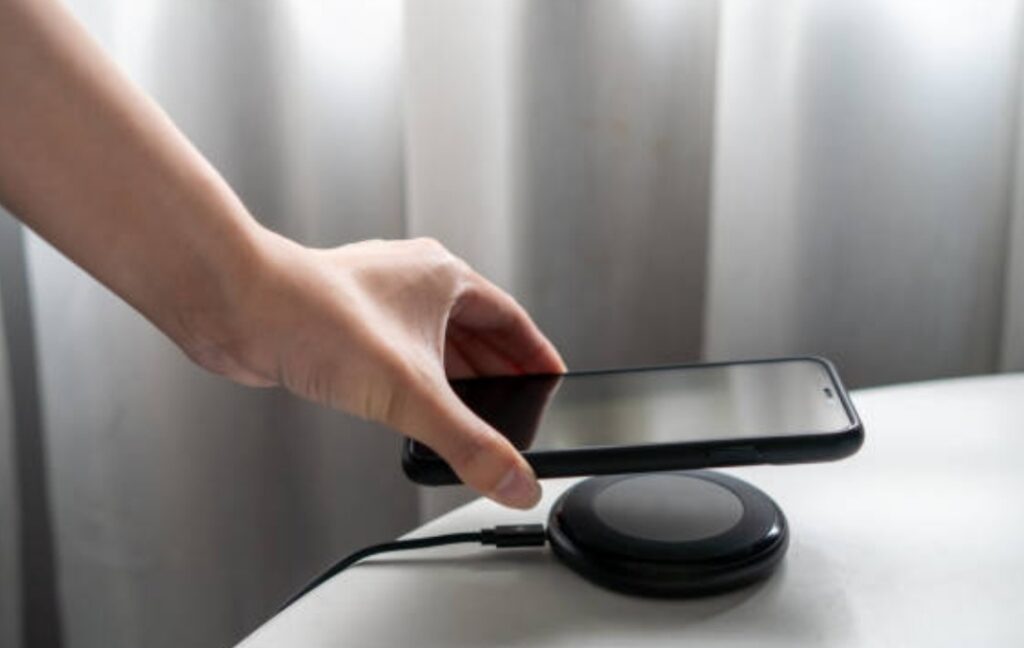
Qi Wireless Charging Standard
What is the Qi Standard, and Why is It Important?
Qi (pronounced “chee”) is the leading global standard for wireless charging, developed by the Wireless Power Consortium (WPC).
This standard ensures that all Qi-certified chargers and devices work seamlessly together, regardless of brand.
The Qi standard was introduced in 2009 and has since become the most widely adopted wireless charging technology worldwide.
Key Features of Qi Wireless Charging:
✅ Universal Compatibility – Qi chargers work with all Qi-enabled devices, including iPhones, Samsung Galaxy, Google Pixel, and more.
✅ Safe and Efficient Power Transfer – Regulates power levels to prevent overheating and battery damage.
✅ Improved Charging Speeds – Supports fast wireless charging up to 50W+ on compatible devices.
✅ Foreign Object Detection (FOD) – Prevents charging if metal objects (like keys or coins) are placed on the pad, reducing fire hazards.
Why You Should Use a Qi-Certified Wireless Charger
When shopping for a wireless charger, it’s crucial to choose a Qi-certified model.
Here’s why:
🚀 Ensures Device Compatibility – Works with all major smartphones and accessories.
🔋 Protects Your Battery – Prevents overheating, overcharging, and voltage fluctuations.
⚡ Delivers Fast and Reliable Charging – Optimized power output for efficient charging speeds.
🛡 Built-in Safety Features – Foreign Object Detection (FOD), temperature control, and auto shut-off prevent potential hazards.
Using non-certified chargers may lead to:
❌ Slower charging speeds.
❌ Overheating risks that damage your battery over time.
❌ Device incompatibility issues.
For the best charging experience, always look for the Qi logo on wireless chargers before purchasing (See top Qi-certified chargers here).
Wireless charging is a game-changing innovation that provides hassle-free power delivery to modern devices.
By understanding how wireless chargers work, you can make informed decisions when choosing a safe and efficient charging solution.
💡 Pro Tip: Always use a Qi-certified charger to ensure fast, safe, and reliable wireless charging for your devices.
Preparing to Use a Wireless Charger
Wireless charging is a convenient and hassle-free way to keep your devices powered up.
But before you start using a wireless charger, it’s essential to ensure your device is compatible and that you’re choosing the right charger for your needs.
In this section, we’ll cover how to determine if your device supports wireless charging and the key factors to consider when selecting a high-quality wireless charger.

Checking Device Compatibility
Not all smartphones and electronic devices support wireless charging.
Before purchasing a wireless charger, you must check if your device has built-in wireless charging capabilities or if you need an adapter to enable wireless charging.
How to Determine If Your Device Supports Wireless Charging
There are several ways to check if your smartphone, earbuds, or smartwatch support wireless charging:
✅ Check the Manufacturer’s Specifications – Visit the official website of your device’s manufacturer and look for wireless charging support under the battery or charging section.
✅ Look for the Qi Logo on Your Device or Packaging – If your phone or device supports Qi wireless charging, the packaging or user manual should indicate it.
✅ Search Online for Your Device Model – Simply Google “Does your device name support wireless charging?” to find out if it has built-in wireless charging capabilities.
✅ Try a Wireless Charger – If you already own a wireless charger, place your device on it. If the device starts charging, then it’s wireless charging compatible.
If your phone does not support wireless charging, you can still use a wireless charging adapter or a wireless charging case to enable this feature (Check recommended wireless charging adapters here).
List of Popular Devices with Built-in Wireless Charging
Most modern flagship smartphones now support Qi wireless charging.
Below is a list of popular devices that support wireless charging:
🔹 Apple iPhones with Wireless Charging:
- iPhone 8, 8 Plus
- iPhone X, XR, XS, XS Max
- iPhone 11, 11 Pro, 11 Pro Max
- iPhone 12, 12 Mini, 12 Pro, 12 Pro Max
- iPhone 13, 13 Mini, 13 Pro, 13 Pro Max
- iPhone 14, 14 Plus, 14 Pro, 14 Pro Max
- iPhone 15, 15 Plus, 15 Pro, 15 Pro Max
🔹 Samsung Galaxy Phones with Wireless Charging:
- Galaxy S6, S6 Edge, S6 Edge+
- Galaxy S7, S7 Edge
- Galaxy S8, S8+
- Galaxy S9, S9+
- Galaxy S10, S10e, S10+
- Galaxy S20, S20+, S20 Ultra
- Galaxy S21, S21+, S21 Ultra
- Galaxy S22, S22+, S22 Ultra
- Galaxy S23, S23+, S23 Ultra
🔹 Other Phones That Support Wireless Charging:
- Google Pixel 3, 4, 5, 6, 7, 8 series
- OnePlus 8 Pro, OnePlus 9 Pro, OnePlus 10 Pro
- LG V30, V35, V40, V50, G7, G8
- Sony Xperia 1 III, Xperia 5 III, Xperia XZ2
🔹 Wireless Charging Earbuds & Accessories:
- Apple AirPods (with wireless charging case)
- Samsung Galaxy Buds+ / Galaxy Buds Pro
- Google Pixel Buds
- Sony WF-1000XM4
- Some smartwatch models, including Apple Watch Series 6 & newer
If your device isn’t listed above, check the manufacturer’s website or consider purchasing a wireless charging adapter (Check recommended adapters here).

Selecting the Right Wireless Charger
Not all wireless chargers are created equal.
The right wireless charger can make a huge difference in charging speed, efficiency, and overall user experience.
Before buying a charger, consider these essential factors to ensure you get the best charging performance.
Factors to Consider When Buying a Wireless Charger
🔹 1. Power Output & Charging Speed
Wireless chargers vary in power output, typically ranging from 5W, 10W, 15W, and even 50W+ for fast charging.
- 5W – Standard charging speed (suitable for low-power devices like wireless earbuds).
- 10W – Moderate speed (supports many Android phones).
- 15W+ – Fast charging (best for Apple and Samsung flagship devices).
To maximize charging speed, make sure to check:
✅ Your device’s maximum supported wireless charging speed.
✅ The charger’s wattage output.
✅ Whether you need a separate fast-charging adapter.
💡 Pro Tip: If you own an iPhone 12, 13, 14, or 15, consider using a MagSafe charger, which provides faster and more stable charging.
🔹 2. Qi-Certification for Safety & Compatibility
Always choose a Qi-certified wireless charger to ensure safe and efficient charging.
✅ Prevents overheating
✅ Ensures device compatibility
✅ Prevents overcharging
✅ Optimized power output
💡 How to identify Qi-certified chargers? Look for the Qi logo on the packaging or check the manufacturer’s website.
🔹 3. Charger Design & Form Factor
Wireless chargers come in different styles, including:
- Flat charging pads – Ideal for desks and nightstands.
- Stand-up chargers – Great for keeping your phone upright while charging.
- 3-in-1 chargers – Charge multiple devices at once (phone, earbuds, and smartwatch).
Choose a design that best fits your needs.
💡 Pro Tip: If you use your phone for video calls or notifications while charging, opt for a stand-up wireless charger.
🔹 4. Brand Reputation & User Reviews
Not all wireless chargers are reliable.
To ensure high-quality performance, choose trusted brands like:
✅ Anker – Affordable, high-quality Qi-certified chargers.
✅ Belkin – Official Apple & Samsung-certified chargers.
✅ RAVPower – Fast-charging Qi wireless pads.
✅ Samsung – Best for Galaxy devices.
✅ Apple MagSafe Charger – Best for iPhones 12, 13, 14, and 15.
Reading user reviews can help you identify issues with specific models before purchasing.
💡 Pro Tip: Always buy from reputable sources to avoid cheap, unreliable wireless chargers.
Best Wireless Charger Recommendations
If you’re looking for the best wireless charger, here are some top-rated models:
📌 Best Overall: Anker Wireless Charger – 15W Fast Charging
📌 Best for iPhones: Apple MagSafe Charger – 15W Fast Wireless Charging
📌 Best for Samsung: Samsung 15W Fast Wireless Charging Stand
📌 Best for Multiple Devices: Belkin 3-in-1 Wireless Charger for iPhone, AirPods, and Apple Watch
These chargers offer reliable, fast, and safe wireless charging, ensuring seamless power delivery to your devices.
Choosing the right wireless charger is crucial for fast, efficient, and safe charging.
Before buying, always:
✅ Check if your device supports wireless charging.
✅ Look for Qi-certified chargers for safety and performance.
✅ Consider fast-charging options for quicker power-ups.
✅ Select a design that fits your needs.
💡 Ready to switch to wireless charging? Check out the best Qi-certified chargers here for a seamless charging experience! 🚀
Step-by-Step Guide on How to Use Wireless Chargers
Using a wireless charger is incredibly simple, but to ensure maximum efficiency and fast charging speeds, you need to follow the correct setup process.
This section will guide you through the step-by-step process of setting up your wireless charger, positioning your device correctly, and starting the charging process smoothly.
By following these instructions, you can ensure your device charges safely, quickly, and efficiently every time you place it on the charging pad.
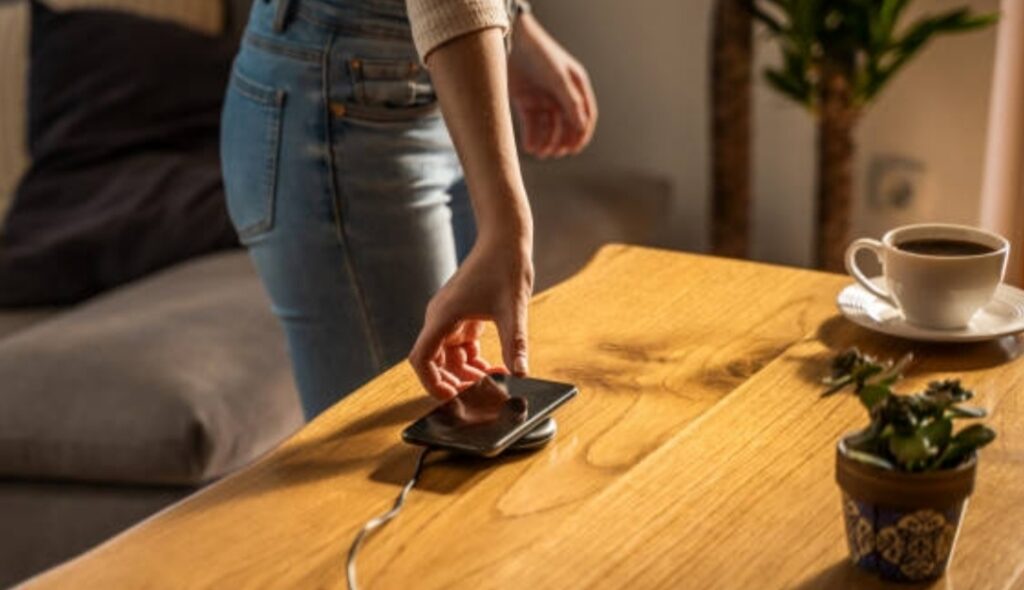
Setting Up the Wireless Charger
Before placing your device on a wireless charger, it’s crucial to set up the charging pad correctly.
A poorly connected charger or an unstable surface can disrupt charging, slow down charging speeds, or even cause your device to slide off.
Here’s a step-by-step guide to setting up your wireless charger the right way.
1. Connect the Wireless Charger to a Power Source
Most Qi wireless chargers come with a USB-C or Micro-USB cable and an adapter.
Follow these steps to connect the charger correctly:
✅ Use the provided power cable – Always use the official cable that came with your charger to ensure maximum efficiency.
✅ Plug into a high-power adapter – Many wireless chargers require a fast-charging adapter (18W, 20W, or higher) to deliver optimal power output.
✅ Avoid low-power sources – Connecting your charger to a weak power source, such as a low-wattage adapter or a USB port on a computer, may result in slower charging speeds.
💡 Pro Tip: If your device supports fast wireless charging, make sure you use a Quick Charge (QC) or Power Delivery (PD) adapter for maximum charging speed.
2. Place the Wireless Charger on a Stable, Flat Surface
For safe and efficient charging, your wireless charger must be positioned correctly.
Here’s why:
✅ Prevents your device from slipping off – A flat, non-slip surface ensures your phone stays in place.
✅ Improves charging efficiency – A stable surface helps align the charger’s coil with your phone’s coil, ensuring optimal power transfer.
✅ Reduces overheating risks – Proper airflow around the charger prevents it from overheating during long charging sessions.
💡 Best Places to Keep Your Wireless Charger:
- Nightstand – Convenient for charging overnight.
- Work Desk – Perfect for keeping your phone charged while working.
- Living Room Table – Ideal for quick, casual charging.
- Car Dashboard (if using a wireless car charger) – Ensures your phone stays charged during long drives.
📌 Avoid placing the charger on uneven or soft surfaces like beds or couches, as they can cause your device to overheat or misalign.
Positioning Your Device Correctly
One of the most common issues people face when using a wireless charger is improper device alignment.
If your device is not correctly placed on the charger, it may charge slowly, intermittently, or not at all.
Here’s how to ensure proper alignment for fast and efficient charging.
1. Align the Device’s Receiver Coil with the Charger’s Transmitter Coil
Every wireless charging-compatible device has a built-in receiver coil, and every wireless charger has a transmitter coil.
For efficient charging, these coils must be properly aligned.
Here’s how to do it correctly:
✅ Center your phone on the charging pad – The middle of your phone should be aligned with the center of the wireless charger.
✅ Adjust placement for larger devices – If your phone has a large screen, you may need to shift it slightly higher or lower to align the coils properly.
✅ Use MagSafe for iPhones – If you’re using an iPhone 12, 13, 14, or 15, a MagSafe charger automatically aligns your phone using magnets, ensuring perfect positioning.
💡 How to Know If Your Phone Is Aligned Correctly?
- Your phone starts charging immediately.
- The charging indicator light on your phone turns on.
- The LED light on the wireless charger confirms charging has begun.
2. Ensure Proper Placement for Optimal Charging Efficiency
Even if your device starts charging, improper placement can slow down the charging speed.
Follow these tips for best results:
✅ Remove thick phone cases – Some thick cases (like metal or magnetic cases) block wireless charging signals.
✅ Avoid placing objects between the phone and charger – Items like credit cards, metal rings, or PopSockets can interfere with charging.
✅ Keep the charger clean – Dust and debris on the charging pad can reduce charging efficiency.
📌 Pro Tip: If your phone isn’t charging even after proper placement, try repositioning it slightly to find the best alignment spot.
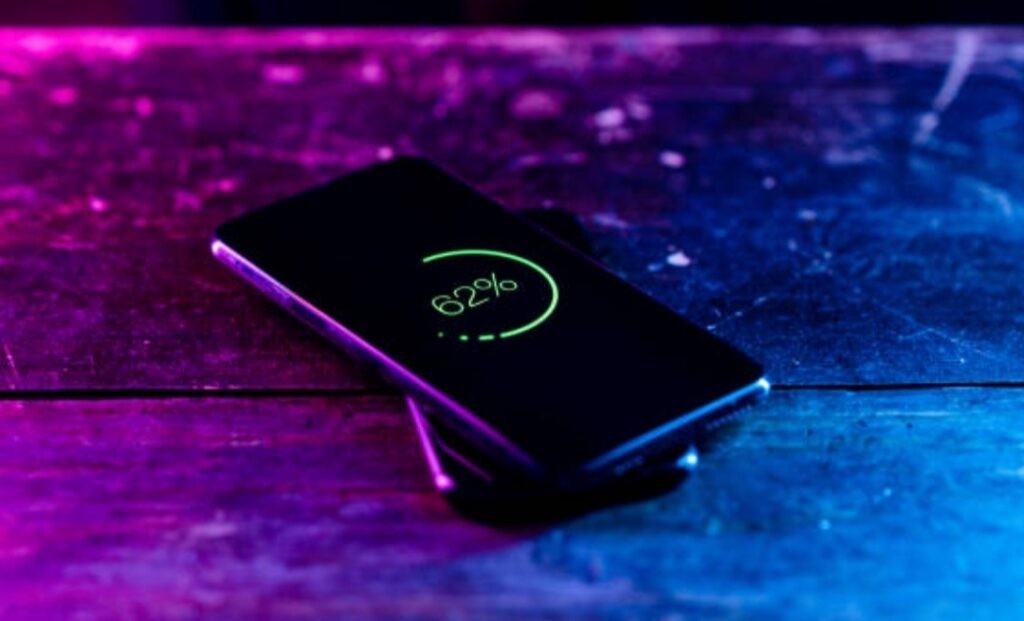
Initiating the Charging Process
Once your wireless charger is set up and your device is correctly positioned, it’s time to start the charging process.
Here’s what to expect when your device begins wireless charging.
1. Indicators That Confirm Charging Has Begun
Most wireless chargers and smartphones provide clear indicators that show charging is in progress.
Here’s how to know if your device is charging successfully:
✅ Phone’s battery icon shows charging – A charging symbol (⚡ or 🔋) will appear on your screen.
✅ LED light on the charger turns on – Many wireless chargers have a small LED indicator that glows blue, green, or white when charging.
✅ Your phone may vibrate or beep – Some devices give a small vibration or sound when placed correctly on the charger.
✅ On-screen notification appears – Many smartphones display a pop-up message saying “Wireless Charging Started.”
📌 If your phone isn’t charging, try repositioning it on the pad or checking the power connection.
2. Approximate Charging Times & What to Expect
The charging speed of your device depends on several factors, including:
🔹 The wattage of your wireless charger – 5W chargers are slow, while 15W or 20W chargers are much faster.
🔹 Your device’s maximum wireless charging speed – Some phones only support slower speeds, even with a fast charger.
🔹 Using the right power adapter – A high-wattage adapter speeds up charging significantly.
💡 Typical Charging Times for Wireless Charging:
- 5W charger → 3-5 hours for a full charge.
- 10W charger → 2-3 hours for a full charge.
- 15W charger → 1.5-2.5 hours for a full charge.
- MagSafe (Apple) 15W charger → About 2 hours for iPhones.
📌 Fast wireless chargers (15W+) can charge most modern smartphones to 50% in about 30-45 minutes.
Using a wireless charger is incredibly easy once you know how to set it up properly.
To ensure fast and efficient charging:
✅ Use the right power adapter to maximize charging speed.
✅ Place your charger on a stable, flat surface for better alignment.
✅ Properly position your device to ensure maximum power transfer.
✅ Look for charging indicators to confirm that charging has begun.
💡 Ready to upgrade to a faster wireless charger? Check out the best fast wireless chargers here! 🚀
Safety Tips for Using Wireless Chargers
When learning how to use wireless chargers, safety should always be a top priority.
While wireless charging is convenient and efficient, improper usage can lead to overheating, reduced charging efficiency, and potential hazards.
To ensure a safe and optimal wireless charging experience, follow these essential safety tips.

Avoiding Overheating
Overheating is one of the most common issues people experience when using wireless chargers.
Excess heat can reduce battery lifespan, slow down charging speeds, and even damage your device over time.
Here’s how to prevent overheating when using a wireless charger.
1. Remove Metallic Objects Near the Charging Area
One of the biggest risks when using a wireless charger is the presence of metal objects near the charging area.
Why?
🔹 Metal interferes with wireless charging signals, causing inefficiency and excessive heat buildup.
🔹 Objects like coins, keys, and credit cards can become dangerously hot if placed on the charging pad.
🔹 Some phone cases have metal components that can block wireless charging and lead to overheating issues.
📌 What to Do:
✅ Always check your charging area and remove any metal objects before placing your phone on the charger.
✅ Use a non-metallic phone case if possible.
✅ Avoid placing your phone on a wireless charger with objects like rings, pop sockets, or magnetic accessories attached.
💡 Pro Tip: If your device is getting too hot, remove it from the charger and let it cool down before trying again.
2. Ensure Adequate Ventilation Around the Charging Pad
Wireless chargers generate heat as they transfer power to your device.
If the charger is placed in a poorly ventilated area, it can trap heat, reducing efficiency and potentially damaging your phone’s battery.
Here’s how to ensure proper ventilation for your wireless charger:
✅ Place the charger on a hard, flat surface – Avoid placing it on soft materials like beds or couches, as they can trap heat.
✅ Keep the charging pad away from direct sunlight – Charging your phone under the sun can cause it to overheat quickly.
✅ Use a cooling fan or heat-dissipating surface – Some wireless chargers come with built-in cooling fans to prevent overheating.
✅ Give your phone a break – If your phone feels too hot, remove it from the charger and let it cool down before continuing.
📌 Overheating can significantly shorten your phone’s battery life. Always keep your charging area well-ventilated.
Using Appropriate Cases
Many people don’t realize that their phone case can affect the efficiency of wireless charging.
If your device isn’t charging properly, your case might be the reason.
Here’s everything you need to know about choosing the right phone case for wireless charging.
1. Impact of Thick or Metal Cases on Charging Efficiency
Not all phone cases are wireless charging compatible.
Some cases block or interfere with the charging signal, leading to slow charging or no charging at all.
🔹 Thick cases – Cases made from thick plastic, rubber, or leather can weaken the wireless charging signal, making charging slower or ineffective.
🔹 Metal cases – Metal blocks electromagnetic signals, preventing wireless chargers from transferring power to your phone.
🔹 Magnetic cases – Cases with built-in magnets (such as those used for magnetic mounts) can interfere with wireless charging.
📌 Solution: If your phone is not charging properly, try removing the case and placing it directly on the charger.
2. Best Phone Cases for Wireless Charging
To ensure smooth and efficient wireless charging, use wireless charging-compatible cases.
Here are the best options:
✅ Thin silicone or TPU cases – These allow for uninterrupted wireless charging.
✅ Clear plastic cases – Lightweight and wireless charger-friendly.
✅ MagSafe-compatible cases (for iPhone users) – Specifically designed to work with MagSafe wireless chargers.
📌 Avoid cases thicker than 3mm, as they can reduce charging efficiency.
💡 Pro Tip: If you use a PopSocket or magnetic mount, remove it before charging for better performance.

Keeping the Charging Area Clear
For safe and efficient wireless charging, you need to keep your charging area clean and free from obstructions.
Dust, debris, and foreign objects can affect charging performance and even pose safety risks.
1. Removing Foreign Objects to Prevent Interference
Wireless chargers use electromagnetic induction to charge your device.
If there are any objects between the phone and the charging pad, they can:
🔹 Interrupt the charging process, making it slower or ineffective.
🔹 Cause the charger to overheat, leading to reduced battery life.
🔹 Pose fire hazards if the object overheats excessively.
📌 Always remove objects like:
❌ Coins, keys, and credit cards
❌ Magnetic phone holders
❌ Other electronic devices
✅ Best Practice: Before placing your phone on the charger, check for any objects that could interfere with charging.
2. Regularly Clean the Charging Pad for Optimal Performance
Over time, dust and debris can accumulate on the charging pad, reducing its efficiency.
Here’s how to keep your wireless charger clean and in top condition:
✅ Use a soft microfiber cloth to wipe down the charging surface regularly.
✅ Avoid using liquid cleaners, as moisture can damage the internal components.
✅ Check the charging cable and port for dust buildup, which can affect power delivery.
💡 Pro Tip: If your phone is charging slower than usual, cleaning the charger may help improve performance.
Using a wireless charger is easy, but following proper safety tips ensures that you get the best performance while keeping your device and charger in top condition.
📌 To charge safely and efficiently:
✅ Remove any metal objects near the charger to prevent overheating.
✅ Use a well-ventilated area to avoid excessive heat buildup.
✅ Choose a case that is wireless charging-compatible for the best results.
✅ Keep the charging pad clean and free from dust or foreign objects.
💡 Want to upgrade to a faster and safer wireless charger? Check out the best-rated wireless chargers here! 🚀
Enhancing Charging Efficiency
Using wireless chargers offers convenience, but charging efficiency depends on how you use them.
By following the right charging practices and understanding wireless charging speeds, you can ensure faster charging, longer battery life, and better overall performance.
Here’s how to optimize your wireless charging experience.

Optimal Charging Practices
Your charging habits directly impact battery health and wireless charging efficiency.
By following these best practices, you can maximize battery lifespan, reduce wear and tear, and improve charging speed.
1. Charge When Battery Levels Are Between 20% and 80%
One of the most effective ways to preserve battery health is to avoid extreme charge levels.
🔹 Charging your phone from 0% to 100% regularly can shorten battery lifespan.
🔹 Keeping your battery between 20% and 80% helps maintain optimal battery performance.
🔹 Lithium-ion batteries, which power most modern smartphones, experience less stress when operating in this range.
📌 Best Practices for Battery Longevity:
✅ Charge your phone before it drops below 20% to prevent deep discharges.
✅ Unplug or remove it from the wireless charger once it reaches 80% to reduce battery stress.
✅ Use built-in battery optimization features on your smartphone (e.g., Apple’s Optimized Battery Charging or Android’s Adaptive Battery).
💡 Pro Tip: If you need a full charge overnight, use a smart charger with adaptive charging to slow down charging after reaching 80%.
2. Avoid Using Your Device While Charging
Many users continue using their phones while charging, but this can reduce charging efficiency and increase heat buildup.
Here’s why you should avoid phone usage during wireless charging:
🔹 Increased power consumption – Apps running in the background (such as video streaming or gaming) slow down charging speeds.
🔹 Heat generation – Wireless charging naturally produces heat, and using your phone adds extra heat, leading to inefficiency and battery strain.
🔹 Inconsistent charging – Constant screen usage and background processes can interfere with power delivery, making charging slower and less efficient.
📌 Best Practices:
✅ Put your phone on Do Not Disturb mode to reduce unnecessary notifications.
✅ Close apps running in the background to minimize power consumption.
✅ If possible, avoid streaming, gaming, or heavy app usage while charging.
💡 Pro Tip: If you need to use your phone while charging, opt for wired charging, as it is more efficient and generates less heat.
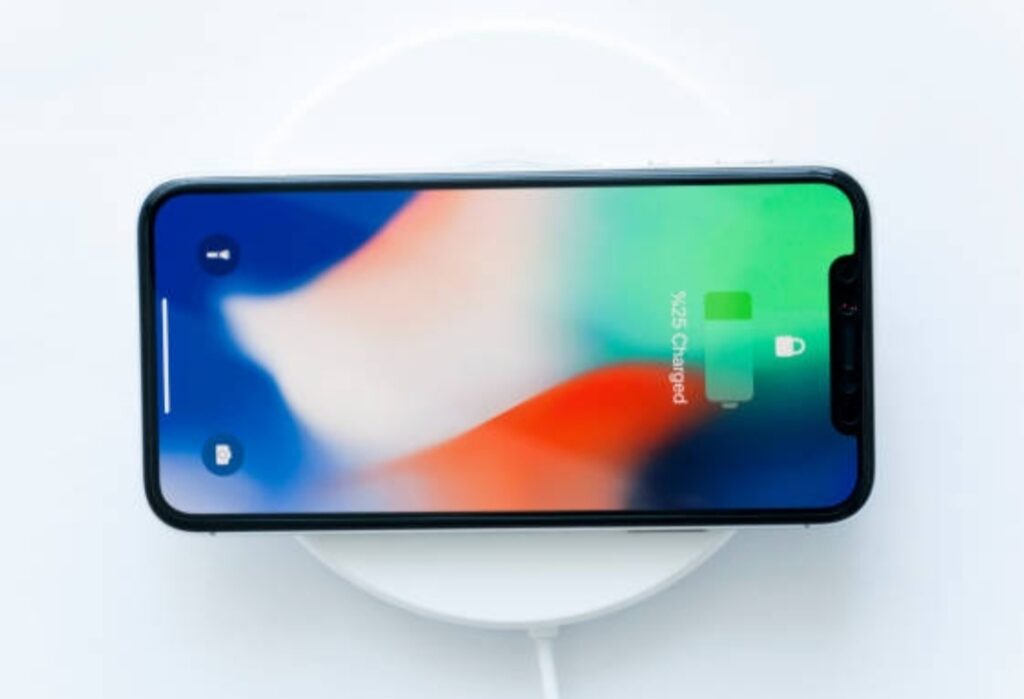
Understanding Charging Speeds
Not all wireless chargers offer the same charging speeds.
Understanding the differences between standard and fast wireless charging and the factors affecting charging speed can help you choose the best charger for your needs.
1. Differences Between Standard and Fast Wireless Charging
Wireless chargers come in two primary charging speeds:
✅ Standard Wireless Charging (5W – 7.5W)
🔹 The most common wireless charging speed.
🔹 Suitable for overnight charging or when you’re not in a hurry.
🔹 Slower but generates less heat, making it safer for battery health.
✅ Fast Wireless Charging (10W – 15W or higher)
🔹 Delivers faster charging speeds, reducing charging time significantly.
🔹 Requires a compatible fast-charging phone and a fast wireless charger.
🔹 Can generate more heat, so proper ventilation is crucial.
💡 Pro Tip: If you need to charge your phone quickly, use a fast wireless charger that supports your device’s highest compatible wattage.
📌 Did You Know? iPhones support 7.5W fast wireless charging, while Samsung phones can charge up to 15W or more with the right charger.
2. Factors That Influence Wireless Charging Speed
Several factors affect how quickly your phone charges wirelessly.
🔹 Power Output of the Charger – Higher wattage (10W, 15W, or more) = faster charging speeds.
🔹 Device Compatibility – Not all phones support fast wireless charging. Check your phone’s specs before buying a high-speed wireless charger.
🔹 Charger and Cable Quality – A low-quality adapter or cable can slow down charging speeds. Use an official or certified power adapter.
🔹 Alignment of the Device – If your phone is not properly aligned with the charging pad’s coils, it may charge slower or stop charging altogether.
🔹 Case Thickness – A thick or metal case can block the wireless charging signal, slowing down the process.
🔹 Temperature and Ventilation – High temperatures can throttle charging speeds to prevent overheating. Always ensure proper ventilation when charging.
📌 How to Get the Best Wireless Charging Speeds:
✅ Use a high-quality fast wireless charger with at least 10W or higher output.
✅ Make sure your phone supports fast wireless charging before buying a high-wattage charger.
✅ Place your phone directly in the center of the charging pad for better alignment.
✅ Use the correct power adapter recommended by the manufacturer.
✅ Keep the charging area well-ventilated to avoid overheating.
💡 Pro Tip: If your phone charges too slowly, try using a different power adapter or switching to a wired fast charger for quicker results.
Enhancing wireless charging efficiency requires smart charging habits and choosing the right accessories.
📌 To get the best wireless charging experience:
✅ Charge your phone between 20% and 80% to extend battery life.
✅ Avoid using your phone while charging to prevent overheating and power loss.
✅ Choose a fast wireless charger with high power output for quicker charging.
✅ Ensure your phone and charger are properly aligned to maximize efficiency.
✅ Use a high-quality adapter and cable to get the best power delivery.
💡 Want to upgrade to a high-speed wireless charger? Check out the best fast wireless chargers here! 🚀
Troubleshooting Common Wireless Charging Issues
Wireless chargers offer convenience and ease of use, but sometimes, users experience charging issues that can be frustrating.
If your wireless charger is not working properly, don’t worry!
This section covers the most common wireless charging problems and their solutions, helping you get back to efficient and hassle-free charging.
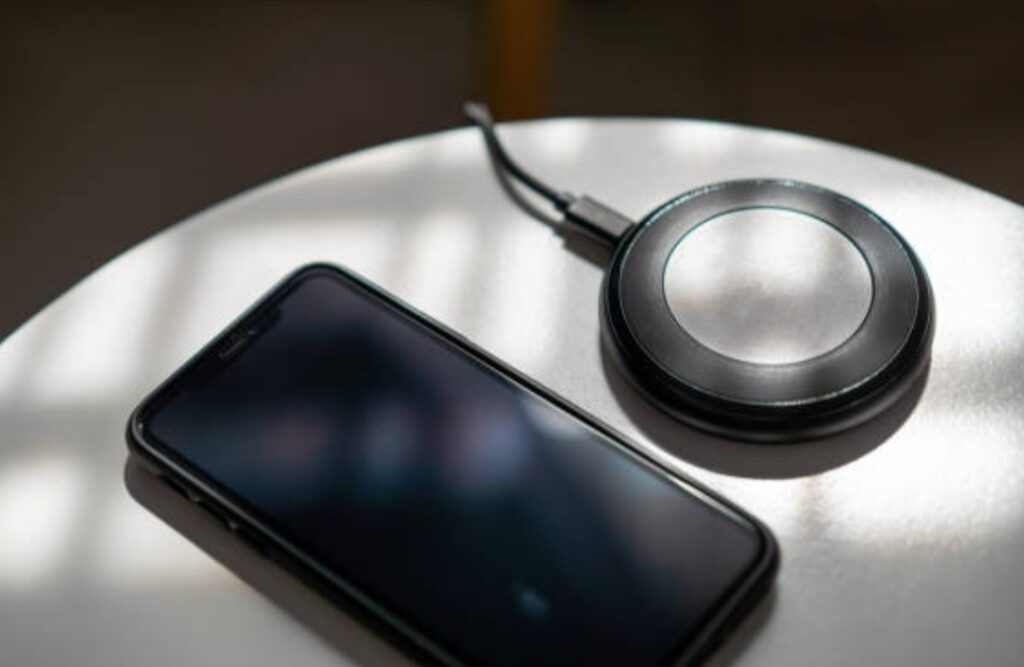
Device Not Charging
One of the most frustrating issues with wireless chargers is when the device refuses to charge.
This problem can be caused by misalignment, software issues, or even incompatible hardware.
Here’s how to fix it:
1. Ensure Proper Alignment on the Charging Pad
Wireless charging works through electromagnetic induction, meaning the charging coils in the phone and charger must align correctly.
🔹 If the phone is not placed correctly, it may not charge at all or charge intermittently.
🔹 Some phones require precise alignment, while others, like the latest iPhones with MagSafe, snap into the optimal position automatically.
🔹 If your charger has LED indicators, check if they signal a proper connection.
📌 Fix:
✅ Center the phone on the charging pad for proper alignment.
✅ If using a vertical stand charger, ensure the phone is resting in the right position.
✅ Try adjusting the placement slightly to find the charging “sweet spot.”
💡 Pro Tip: Some charging pads support multi-coil technology, allowing for more flexibility in positioning. Consider upgrading to one of these for easier alignment.
2. Check for Software Issues or Charging Settings
Sometimes, software glitches can prevent your phone from charging properly.
🔹 A recent software update may have changed charging settings or introduced bugs.
🔹 Some phones have power-saving features that limit wireless charging.
🔹 If your phone’s battery is completely drained, it may take a few minutes before charging begins.
📌 Fix:
✅ Restart your phone to refresh the system.
✅ Check for pending software updates that may fix charging bugs.
✅ Disable battery optimization settings that could interfere with wireless charging.
✅ If the battery is fully drained, leave it on the charger for 5-10 minutes before assuming it’s not working.
💡 Pro Tip: If your phone charges with a wired charger but not wirelessly, there could be a hardware issue with the wireless charging coil.
Slow Charging Speeds
Wireless charging is generally slower than wired charging, but if your phone is charging extremely slowly, there may be an underlying issue.
Let’s explore the potential causes and how to fix them.
1. Use a Compatible Fast Wireless Charger
Not all chargers deliver the same power output.
🔹 If your phone supports fast wireless charging (e.g., 10W, 15W, or more) but your charger only delivers 5W, charging will be much slower.
🔹 Your phone’s software may limit charging speed if it detects an incompatible charger.
🔹 Some cheap or uncertified chargers don’t deliver the advertised power.
📌 Fix:
✅ Use a wireless charger that matches your phone’s maximum supported charging speed.
✅ Check if your power adapter meets the required wattage. For example, some fast wireless chargers require a 20W or higher adapter to function properly.
✅ Always use official or high-quality third-party chargers with Qi certification.
💡 Pro Tip: Using a low-quality charger or adapter can result in power loss, making charging slower than expected.
2. Close Background Apps and Reduce Power Usage
Running multiple apps while charging can slow down the process.
🔹 Streaming videos, gaming, or running resource-heavy apps increases power consumption, making it seem like the phone isn’t charging at all.
🔹 Some apps run in the background, draining battery power even while charging.
📌 Fix:
✅ Close unnecessary apps before placing your phone on the charger.
✅ Switch to Airplane Mode or Low Power Mode to reduce power consumption.
✅ If you’re in a rush, consider using wired fast charging for quicker results.
💡 Pro Tip: Cooler temperatures improve charging efficiency. Avoid charging your phone in hot environments, as heat slows down charging speeds.
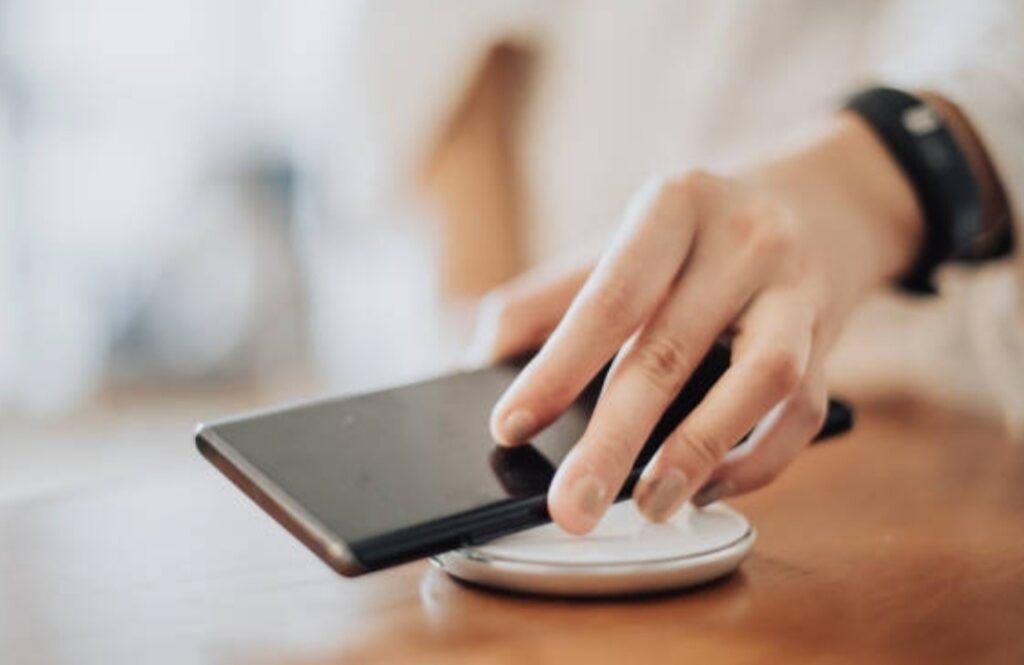
Intermittent Charging
Does your phone start and stop charging randomly when using a wireless charger?
This issue can be caused by misalignment, foreign object detection, or a faulty charger.
Let’s troubleshoot the problem.
1. Fix Alignment Issues to Ensure a Stable Connection
🔹 If your phone isn’t perfectly aligned, the charging connection may keep breaking.
🔹 Some wireless chargers have sensitive coils that require precise positioning.
📌 Fix:
✅ Adjust your phone’s position slightly on the charging pad.
✅ If you’re using a MagSafe charger, ensure the magnets are properly attached.
✅ Consider using a charger with multiple coils for a more forgiving placement area.
💡 Pro Tip: Some cases prevent proper alignment. Try removing the case and see if that solves the issue.
2. Remove Foreign Objects That May Interfere with Charging
Wireless chargers use magnetic fields to transfer power. If a metal object is nearby, it can block charging or cause overheating.
🔹 Keys, coins, or metal cases can trigger the foreign object detection (FOD) feature, stopping charging for safety reasons.
🔹 Thick phone cases (especially with metal components) can disrupt wireless charging.
📌 Fix:
✅ Remove any metal objects near the charging area.
✅ If using a phone case with metal parts, try charging without the case.
✅ Clean the charging pad and phone’s back to ensure there’s no dust or debris blocking the connection.
💡 Pro Tip: If your phone has a wireless charging-compatible case, check if it supports fast charging. Some cases slow down charging speeds significantly.
If your wireless charger isn’t working properly, don’t panic!
Most charging issues can be fixed with simple troubleshooting steps.
📌 Key Takeaways for a Seamless Wireless Charging Experience:
✅ Align your phone correctly on the charging pad for proper charging.
✅ Use a compatible fast wireless charger that supports your phone’s maximum speed.
✅ Close background apps and limit power usage while charging.
✅ Remove metal objects and thick cases that may interfere with charging.
✅ Keep your charger and phone clean to ensure an uninterrupted connection.
💡 Want a reliable fast wireless charger? Check out the top-rated wireless chargers here! 🚀
Future of Wireless Charging Technology
Wireless charging has come a long way from being a niche feature to becoming a mainstream convenience in modern devices.
With advancements in charging speeds, efficiency, and range, the future of wireless charging looks more promising than ever.
In this section, we’ll explore the latest innovations, including the introduction of Qi2, increased charging efficiency, and the integration of wireless charging into everyday life.

Emerging Standards and Innovations
The world of wireless charging technology is constantly evolving.
One of the most exciting developments is the introduction of Qi2 (pronounced ‘Chee Two’), the next-generation wireless charging standard.
Let’s dive into what Qi2 brings to the table and how it improves upon its predecessor.
1. Qi2: The Next Generation of Wireless Charging
Qi2 is set to revolutionize how we charge our devices wirelessly.
🔹 Developed by the Wireless Power Consortium (WPC), Qi2 is designed to address the limitations of the original Qi standard.
🔹 Inspired by Apple’s MagSafe technology, Qi2 introduces a Magnetic Power Profile, ensuring perfect alignment between the charger and the device.
🔹 This reduces energy loss, making wireless charging more efficient and reliable.
📌 Key Benefits of Qi2:
✅ Faster Charging Speeds – Qi2 is expected to support higher wattages without excessive heat buildup.
✅ Improved Energy Efficiency – Reduced power loss means less wasted energy, making it eco-friendly.
✅ Stronger Magnetic Alignment – Devices snap into place for optimal positioning, minimizing interruptions.
✅ Universal Compatibility – More brands are adopting Qi2, ensuring wider device support.
💡 Pro Tip: If you’re wondering how to use wireless chargers effectively, Qi2 will make it even easier!
With magnetic alignment, you won’t have to guess the perfect placement, leading to seamless and frustration-free charging.
2. Faster Charging Speeds and Increased Power Output
One of the biggest concerns with wireless charging has always been its slower speeds compared to wired charging.
But that is changing!
🔹 Current Qi wireless chargers max out at 15W for most devices, but Qi2 and future wireless charging standards will enable higher wattages, potentially reaching 30W or more.
🔹 Faster speeds mean wireless charging could soon rival wired fast charging, eliminating the need for cables altogether.
📌 What This Means for Users:
✅ Less time waiting for your phone to charge.
✅ More convenience without sacrificing speed.
✅ No need to carry multiple charging cables.
💡 Pro Tip: Future smartphones will likely prioritize wireless charging, making it the go-to charging method for most users.

Integration into Everyday Life
Wireless charging isn’t just for smartphones anymore.
As the technology advances, more industries are adopting wireless charging, integrating it into public spaces, vehicles, and even furniture.
Let’s explore how wireless charging is becoming an essential part of daily life.
1. Wireless Charging in Public Spaces
Imagine walking into a café, restaurant, or airport and simply placing your phone on the table to charge—no cables needed.
This futuristic convenience is becoming a reality.
🔹 Many airports, hotels, and coffee shops now offer built-in wireless charging spots on tables and counters.
🔹 Starbucks, McDonald’s, and major airports have already begun integrating Qi-compatible chargers into their furniture.
🔹 Some public transit systems are exploring wireless charging for commuters, making it possible to charge devices on buses, trains, and taxis.
📌 Why This Matters:
✅ Eliminates the need to carry charging cables and adapters.
✅ Reduces wear and tear on phone ports.
✅ Makes charging accessible on the go.
💡 Pro Tip: In the near future, wireless charging could become as common as Wi-Fi, ensuring that your phone is always powered up wherever you go.
2. Wireless Charging in Vehicles
Car manufacturers are embracing wireless charging as a standard feature in modern vehicles.
🔹 Many new cars come with built-in wireless charging pads in the center console or dashboard.
🔹 This eliminates the need for messy cables, making charging more convenient while driving.
🔹 Some luxury car brands are experimenting with long-range wireless charging for electric vehicles (EVs).
📌 Key Benefits of Wireless Charging in Cars:
✅ Hands-free and clutter-free – No need for extra cables.
✅ More convenience – Just place your phone down and charge.
✅ Future-proof technology – Many car models are now shipping with Qi2-compatible charging pads.
💡 Pro Tip: If you’re buying a new car, check if it comes with a built-in wireless charging pad to make your daily commute more convenient.
3. Long-Range Wireless Charging: Charging Without a Pad
One of the most exciting developments in wireless charging is long-range, over-the-air charging.
Imagine a world where your devices charge automatically as soon as you enter a room—no pads, no cables, no contact required.
🔹 Companies like Ossia, Wi-Charge, and Energous are developing radio frequency (RF) and infrared-based wireless charging that can power devices several feet away.
🔹 Instead of placing your phone on a pad, your device will charge while sitting on a desk or in your pocket.
🔹 This could revolutionize smart home technology, wearable devices, and even medical implants.
📌 Potential Benefits of Long-Range Wireless Charging:
✅ Charge multiple devices at once without needing a dedicated pad.
✅ No physical contact required, reducing wear and tear on devices.
✅ Could eliminate wired charging completely in the future.
💡 Pro Tip: Long-range wireless charging is still in its early stages, but in the next 5-10 years, we could see it become the standard way to charge devices.
The Future is Wireless
Wireless charging has evolved significantly, and with Qi2, faster speeds, and long-range capabilities, it’s becoming a mainstream technology.
📌 Key Takeaways:
✅ Qi2 will improve alignment, efficiency, and charging speeds.
✅ Public spaces, vehicles, and furniture are adopting built-in wireless charging.
✅ Long-range wireless charging could eliminate the need for charging pads entirely.
💡 Want to upgrade to the best wireless chargers? Check out these top-rated options now! 🚀
Conclusion of Using Wireless Charger
Wireless charging has transformed the way we power our devices, offering convenience, efficiency, and a clutter-free experience.
By adopting the best practices for using wireless chargers, you can ensure optimal device performance, longer battery life, and safer charging.
Let’s quickly recap the importance of using wireless chargers safely and efficiently, along with some final recommendations to maximize their benefits.

Why Safe and Efficient Wireless Charging Matters
While wireless charging is incredibly convenient, improper usage can lead to inefficiencies, slower charging speeds, and even potential safety hazards.
Ensuring proper alignment, using compatible chargers, and keeping your charging area free from interference will help you get the best performance from your wireless charger.
📌 Key Takeaways for Safe Wireless Charging:
✅ Use certified chargers (preferably Qi-certified) to prevent overheating and inefficiencies.
✅ Ensure correct placement on the charging pad to maximize power transfer.
✅ Keep the charging surface clean and free from foreign objects to avoid charging interruptions.
✅ Avoid overheating by keeping your phone and charger in a well-ventilated area.
✅ Remove thick cases or metal objects that may interfere with wireless charging performance.
💡 Pro Tip: If you’re new to wireless charging and wondering how to use wireless chargers effectively, following these tips will ensure a seamless and efficient charging experience every time.
Best Practices for Long-Term Device Performance
Using a wireless charger correctly not only improves charging efficiency but also extends the overall lifespan of your battery.
To keep your device in top condition, follow these best practices:
🔹 Avoid overnight charging – While most modern smartphones have built-in safeguards, it’s best to unplug once fully charged.
🔹 Keep your phone cool – High temperatures can degrade battery health over time. Wireless charging naturally generates heat, so ensure good airflow around the charger.
🔹 Use fast wireless chargers wisely – Higher wattage chargers are great for quick top-ups, but for long-term battery health, slower charging is often better.
🔹 Regularly update your device software – Manufacturers frequently improve charging efficiency through software updates, so keep your phone up to date.
🔹 Invest in a high-quality charging pad – Not all wireless chargers are created equal. Choose one that is certified for safety and efficiency.
📌 Bonus Tip: If you’re experiencing slow wireless charging speeds, try closing background apps or switching to Airplane Mode to reduce power consumption during charging.
The Future of Wireless Charging is Bright
With rapid advancements in technology, wireless charging is only going to become more efficient and widespread.
✅ The new Qi2 standard promises better alignment, faster charging speeds, and improved compatibility.
✅ Public spaces, vehicles, and even furniture are integrating wireless charging to make it more accessible.
✅ Long-range wireless charging is on the horizon, eliminating the need for charging pads altogether.
💡 Pro Tip: As wireless charging continues to evolve, staying informed about the latest trends will ensure you’re always getting the best experience from your charger.
Upgrade Your Charging Experience Today!
Wireless charging is more than just a trend—it’s the future of powering our devices.
By choosing the right charger, following best practices, and staying up to date with new innovations, you can enjoy a safer, more efficient, and hassle-free charging experience.
🚀 Ready to upgrade to the best wireless chargers? Check out these top-rated options now!
📌 Don’t wait—embrace the future of charging today! 🔋💡
You might also like :

